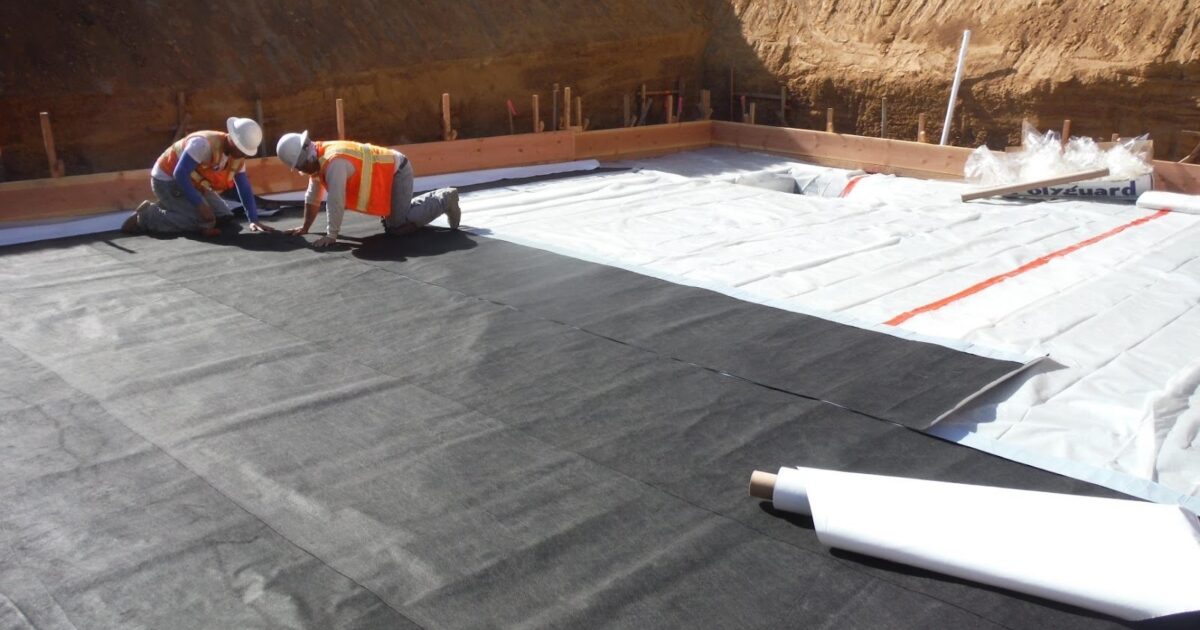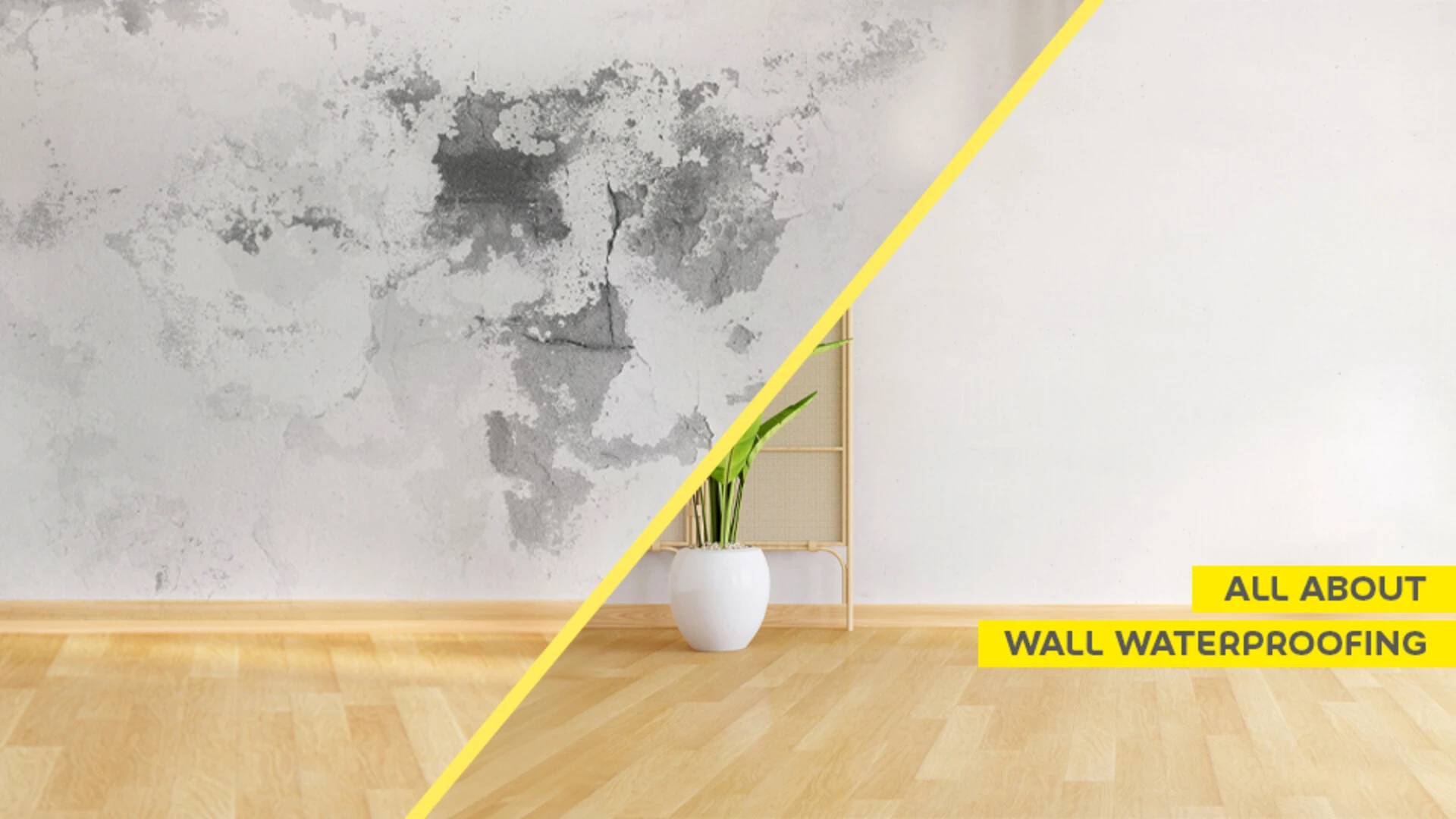French drain installation Omaha: Cost, Benefits, and Planning Tips
How Waterproofing Functions: A Thorough Check Out Techniques and Technologies
Waterproofing is important for protecting structures from moisture-related damage. It includes various strategies and modern technologies that produce barriers versus water intrusion. Traditional approaches, such as compacted clay, exist side-by-side with modern innovations like liquid-applied membranes. Understanding the subtleties of these approaches is important for reliable application. Nonetheless, the performance of any kind of waterproofing option pivots not just on the methods utilized yet likewise on recurring upkeep and assessment. What are the essential factors that influence long-term efficiency?
Comprehending the Basics of Waterproofing
Waterproofing is a vital process that secures structures from water invasion, which can lead to substantial damage over time. This approach involves the application of various products and strategies created to create a barrier versus dampness. The main objective is to stop water from passing through surface areas, which can cause wear and tear, mold development, and architectural instability.Various variables influence the option of waterproofing technique, including the kind of structure, its location, and ecological problems. Recognizing the physics of water movement and the properties of various materials is vital in choosing a reliable waterproofing solution.Effective waterproofing not just safeguards structures but additionally boosts their durability and honesty. Typically, it is integrated into the layout phase of building and construction to ensure thorough protection. As recognition of water-related problems grows, the value of understanding waterproofing fundamentals ends up being progressively clear to designers, home builders, and homeowner alike.
Conventional Waterproofing Approaches
Typical waterproofing methods have been utilized for centuries, depending on reliable techniques and materials to protect structures from water damage. Among the oldest techniques involves making use of clay, which, when compacted, produces a natural obstacle against wetness. Furthermore, asphalt, a sticky, black material originated from petroleum, has been employed for its waterproof residential or commercial properties, frequently applied to roofings and foundations.Another method includes the application of lime-based plasters, which give a breathable layer that enables moisture to run away while stopping water ingress. Thatch roofing, a typical approach still seen in some societies, offers excellent waterproofing because of its firmly loaded straw layers.Moreover, using rock and block has been noticeable, as these products are inherently immune to water when appropriately mounted. Generally, standard waterproofing approaches highlight the significance of picking appropriate materials and building methods to improve sturdiness versus water breach.
Modern Waterproofing Technologies
Developments in modern-day waterproofing technologies have reinvented the means structures are secured from water damages. Innovative approaches such as liquid-applied membranes and advanced sealers have enhanced the performance and adaptability of waterproofing remedies. These innovations allow for smooth application, decreasing the danger of leakages and guaranteeing complete insurance coverage over intricate surfaces.Moreover, the combination of clever modern technologies, such as wetness sensors and automated surveillance systems, allows real-time assessment of waterproofing efficiency. This aggressive approach assists in timely maintenance and lowers long-term repair costs.Additionally, innovations in spray-applied coatings provide fast application and exceptional bond, adjusting to numerous substratums while offering durable protection. Methods like polymer-modified systems better boost versatility and resilience, making them suitable for varied environments. Overall, modern waterproofing innovations not just alleviate water intrusion however additionally add to the long life and sustainability of frameworks, noting a considerable change in the sector.
Materials Made Use Of in Waterproofing
The efficiency of waterproofing options heavily relies on the materials made use of in their application. Different products are employed to create obstacles versus water ingress, each with one-of-a-kind properties suited for different environments. Generally used materials consist of membranes, coatings, and sealants.Liquid-applied membrane layers, commonly made from polyurethane or acrylic, form a smooth barrier that adapts to complex surfaces. Sheet membranes, normally constructed from rubber or polycarbonate, offer durability and are ideal for larger locations. Additionally, cementitious waterproofing materials, composed of cementitious substances, provide exceptional adhesion and flexibility.Sealants made from silicone or polyurethane are important for joints and seams, ensuring complete security. Advanced materials, such as geo-composite membrane layers, incorporate several functions, boosting efficiency. Overall, the selection of waterproofing products is vital in accomplishing durable and effective water resistance, tailored to details project demands and environmental conditions.
Usual Applications of Waterproofing
Waterproofing plays a crucial role in numerous sectors, guaranteeing the durability and honesty of structures. Typical applications include residential services that shield homes, industrial facilities that safeguards businesses, and industrial setups that call for durable defense versus dampness. Understanding these applications highlights the significance of waterproofing in maintaining both security and performance throughout various atmospheres.
Residential Waterproofing Solutions
Many property owners face difficulties with moisture breach, making reliable property waterproofing services essential. Numerous methods exist to address this problem, consisting of exterior and interior redirected here waterproofing systems. Inside solutions usually include the application of sealers and coatings to cellar walls, which aid avoid water seepage. Exterior approaches commonly consist of the installment of water drainage systems and water-proof membranes that divert water away from the foundation.Additionally, home owners might take into consideration sump pumps to get rid of water build-up and dehumidifiers to manage humidity levels. Appropriate grading and the usage of rain gutters also play an important duty in managing water circulation around the home. By implementing these techniques, homeowners can substantially lower the danger of water damages and mold development, making sure a dry and risk-free living setting.

Commercial Framework Security
Efficient waterproofing options play an important function in the security of commercial framework. Water Solutions. These methods are essential for securing buildings, parking structures, and bridges from water damage, which can endanger architectural honesty and bring about costly repair services. Common applications include the installation of membranes, finishings, and sealers that create barriers versus wetness infiltration. Locations such as cellars, roofs, and outside wall surfaces are typically focused on to guarantee long life and toughness. In addition, waterproofing systems can boost power efficiency by stopping water-related problems that might lead to mold development and wear and tear. By applying durable waterproofing procedures, homeowner can protect their investments and preserve operational performance, inevitably adding to the general sustainability of industrial centers
Industrial Applications Summary
While various sectors face special difficulties, the need for reliable waterproofing services stays a constant in industrial applications. Industries such as production, building, and power often run into atmospheres where moisture exposure can endanger this contact form structural integrity and functional performance. In making facilities, waterproofing is crucial for protecting machinery and products from water damages. In construction, it safeguards foundations and basements against groundwater seepage. The energy market counts on waterproofing for the protection of equipment in hydroelectric plants and overseas frameworks. Furthermore, food processing sectors utilize waterproofing to guarantee hygiene and compliance with security standards. Generally, effective waterproofing remedies are vital for enhancing durability, security, and efficiency across numerous commercial settings.
Upkeep and Long Life of Waterproofing Solutions
Although waterproofing options are designed to provide lasting defense versus dampness invasion, routine maintenance is important to assure their effectiveness and long life - Basement waterproofing Omaha. Regular assessments play a considerable duty in determining possible concerns such as cracks, peeling, or signs of water damage. Dealing with these issues promptly can avoid more damage and expensive repairs.Additionally, cleansing the surface area of waterproofed locations assists get rid of dirt and particles that could jeopardize the stability of the waterproofing obstacle. It's likewise recommended to reapply safety finishings or sealants as recommended by suppliers to maintain perfect efficiency. Environmental i was reading this elements, such as UV direct exposure and extreme weather, can impact the lifespan of waterproofing products, making regular analysis vital
Often Asked Inquiries
Can Waterproofing Be Applied in Winter?
The concern of applying waterproofing in cool weather elevates problems regarding bond and curing. Lots of products might not perform at their finest in low temperatures, requiring mindful choice and factor to consider of certain guidelines for effective application.
How Much Time Does Waterproofing Typically Last?
The duration of waterproofing effectiveness varies based on materials and ecological elements. Normally, it can last from 5 to 10 years, however regular maintenance and evaluations are vital to guarantee peak performance and durability.
Is Do It Yourself Waterproofing Effective and Safe?
The efficiency and safety and security of DIY waterproofing rely on numerous elements, consisting of material quality and application technique. While some individuals attain adequate outcomes, others may run into problems that jeopardize long-term defense and architectural honesty.
What Are the Signs of Failing Waterproofing?
Indications of falling short waterproofing include noticeable water spots, peeling off paint, mold and mildew development, mildewy odors, and moisture in walls or ceilings - French drain installation Omaha. These indicators suggest endangered barriers, demanding punctual examination and prospective removal to avoid additional damage
Exactly how Do I Pick the Right Waterproofing Contractor?
